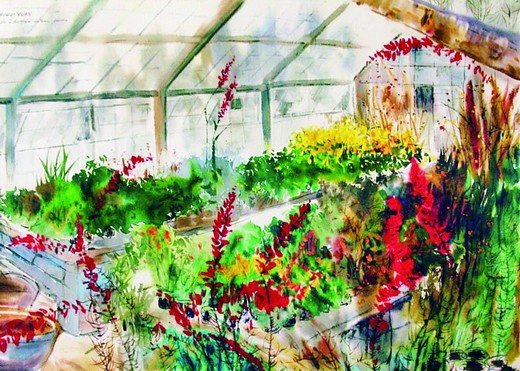Breaking the ice
It was around that time that the 12 painters came together. The four painters knew that although they could not find famous painters to join them, the painters they chose should not present low-class paintings and they agreed to contact painters they knew to join the exhibition.
Xu had a friend who was a math teacher at that time, but was also a painter. After learning of their plans, he joined the group to be the fifth person. Not long after, 10 people including the first four who initiated the activity had gathered together.
But the pronunciation of the number 10 in the Shanghai dialect sounds close to the word "thief," so they decided to find two more people.
As a folk art exhibition, all elements required to hold an exhibition needed to be prepared by the artists themselves. The works were not a problem, but the venue of the exhibition took some time for them to find.
"At the beginning, we thought it could be held at Heping Park where Xu could help us arrange the place. But after inspecting the park, we gave up the idea," recalled Chen. "The park also held exhibitions of animals and it was too far away from the city center, which would not attract people," added Chen.
At the end, a painter who worked at the Huangpu Children's Palace persuaded his senior official who agreed to help them hold the exhibition for free.
The venue was 500 square meters and based on the space, they finally decided to bring 120 pieces of work to the exhibition with each painter showing 10 pieces. "Those works were of different styles, but most were of still objects in a bid to prevent any unexpected troubles," said Xu.
Warmly welcomed by insiders
At eight o'clock in the morning on January 27, 1979, the exhibition opened. With Tchaikovsky's Piano Concerto playing at the Children's Palace and an entrance fee of only 0.05 yuan ($0.007), over 2,000 people came to the exhibition on the opening day.
"The large amount of people was unexpected, and many, almost all, the industry insiders came including many senior art masters," said Chen. "Some of them told us that they were also depressed, and what we were exhibiting was just what they wanted to express. They gave us great support," added Chen.
The exhibition was held for 17 days and received attention from the Shanghai Artists Association where the 12 painters went for a talk with the secretary general, Cai Zhenhua.
Cai expressed congratulations on the exhibition, but also expressed his dissatisfaction with them, saying that exhibitions held in Shanghai had better inform the association first.
Although the painters felt a little bit angry about Cai's word, they were happier about what they'd done for the country and the art world. "Although the paintings are common in today's art world, it was a meaningful way to bring art and paintings back to the country," said an insider.
Since then, modern art started to develop in China, and on September 27 of that year, another similar exhibition was held in Beijing, further spreading art in China.


















